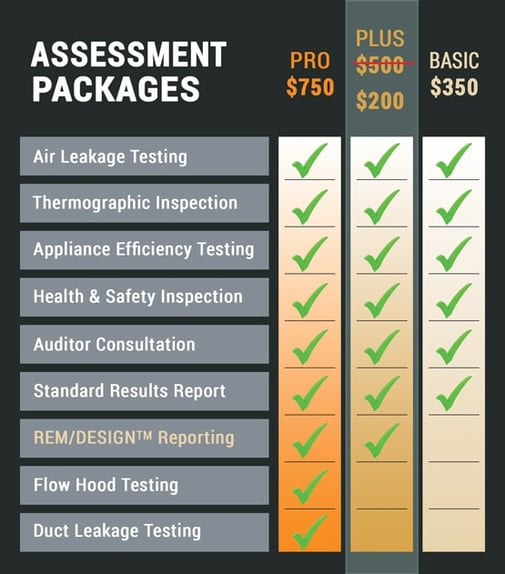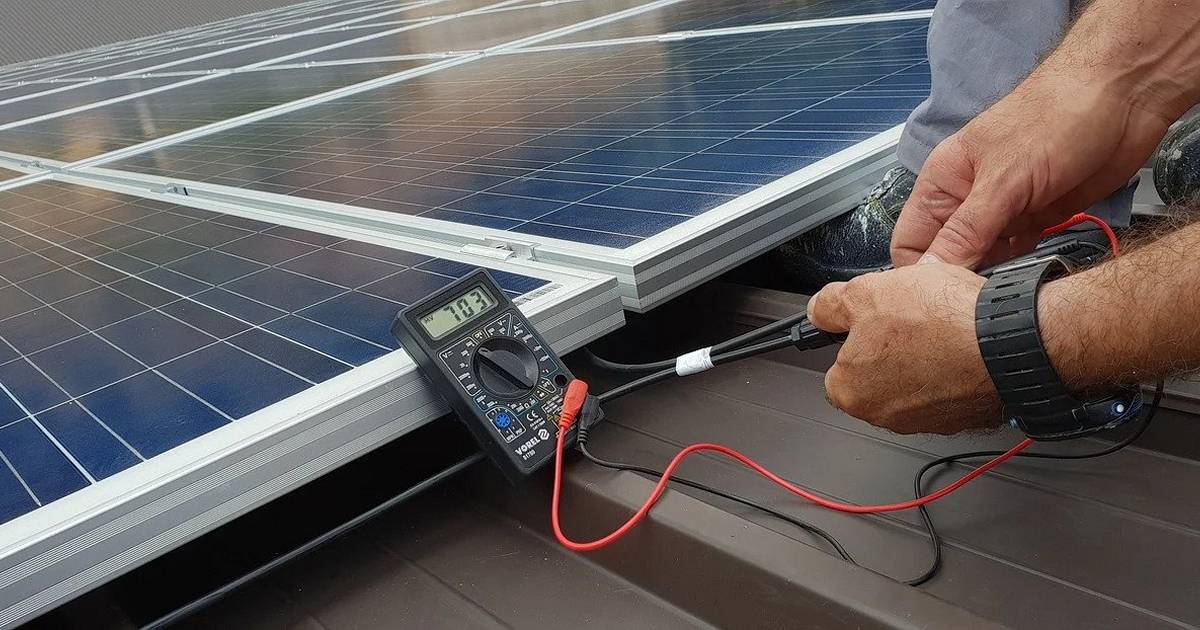Is energy escaping your home? Use energy testing to find and seal the gaps
Is energy escaping your home? Use energy testing to find and seal the gaps
Blog Article
The Function of Energy Testing in Achieving an Airtight Option for Your Residential property
Energy testing is necessary for homeowner looking for to develop an airtight environment. It determines air leaks and inadequacies that can compromise energy efficiency. Usual wrongdoers include gaps around windows and doors. Utilizing approaches like blower door tests and thermal imaging, house owners can gain understandings into their residential property's susceptabilities (energy testing). Comprehending these findings is vital. What steps should be taken when air leakages are determined? The responses hold the secret to improved comfort and savings
Comprehending Power Screening and Its Significance
Energy testing plays an important function in reviewing the airtightness of structures and structures. By determining air leak, this technique provides crucial understandings into a building's energy effectiveness, thermal convenience, and overall performance. Airtight structures lower energy usage, making sure that home heating and air conditioning systems run efficiently. This testing procedure usually entails methods such as blower door tests, which produce a regulated setting to recognize unintentional air pathways.Understanding the importance of power screening extends past conformity with building ordinance; it cultivates an aggressive method to sustainability. Identifying air leaks early can lead to timely remediation, inevitably boosting interior air top quality and lowering utility costs. Furthermore, energy testing adds to the long life of structure materials by lessening wetness accumulation and related damage. As understanding of ecological effect boosts, energy testing comes to be a vital tool for home owners and building contractors aiming for high-performance properties.
Usual Sources of Air Leaks in Properties
Identifying usual resources of air leaks is crucial for improving a building's energy effectiveness. These leaks often occur in various locations of a building, substantially influencing cooling and heating prices. Common culprits include spaces around doors and home windows, where seals might degrade gradually. In addition, electric outlets and buttons can produce paths for air exchange otherwise appropriately insulated. Basements and attics are likewise constant sources, specifically where wall surfaces fulfill the roof covering or the foundation. Other potential leakage factors include pipes penetrations, venting systems, and the areas bordering smokeshafts. Older residential or commercial properties may endure from weakened structure materials, raising susceptability to air seepage. By recognizing these common resources, homeowner can take aggressive steps to seal leakages, therefore enhancing general energy effectiveness and convenience within their rooms. Resolving these problems is an important part of developing a closed option for any kind of residential property.
Approaches of Power Screening: Blower Door and Thermal Imaging
Effective energy testing approaches, such as blower door examinations and thermal imaging, play an essential role in detecting air leaks within a building. The blower door examination entails pressurizing or depressurizing a building to determine air flow and identify leaks. A calibrated follower is set up in an exterior entrance, and the resulting pressure distinction highlights areas of unwanted air seepage. This method measures the general airtightness of the structure.Thermal imaging matches blower door tests by visually discovering temperature variations on surfaces, exposing hidden air leaks. Infrared cameras capture warmth loss or gain, enabling for precise recognition of issue locations, such as poorly protected walls or voids around doors and windows. energy testing south carolina. With each other, these techniques supply a detailed analysis of a property's energy efficiency, making it possible for homeowner to attend to air leakages efficiently and enhance general performance
Advantages of Identifying Air Leaks
Determining air leaks offers substantial benefits for energy effectiveness and interior comfort. By securing these leakages, buildings can reduce power consumption, leading to lower energy bills and a lowered carbon impact. In addition, improved airtightness contributes to a much more secure interior setting, improving general comfort for owners.
Energy Effectiveness Improvements
Identifying air leakages is essential for boosting power performance in buildings. Determining these leakages allows property owners to resolve areas where conditioned air runs away or unconditioned air enters, resulting in considerable energy financial savings. By securing fractures and spaces, structures can preserve a regular temperature, minimizing the need on heating and cooling systems. This not just decreases energy bills yet additionally lessens the ecological impact connected with boosted energy usage. Furthermore, power efficiency renovations contribute to a building's total sustainability, making it a much more attractive option for eco-conscious buyers or renters. Eventually, prioritizing air leak detection and removal aids enhance power use, promotes liable source management, and supports long-term economic advantages for residential or commercial property owners.

Enhanced Indoor Convenience
Attending to air leakages not only leads to energy cost savings however also substantially boosts interior convenience. When air leakages are efficiently identified and secured, temperature guideline within a home comes to be much more effective. This leads to consistent interior temperatures, eliminating chilly drafts in winter season and locations in summertime. Enhanced insulation also reduces sound pollution from outside, producing a quieter and even more relaxed living environment. Furthermore, boosted air high quality is achieved by reducing the infiltration of outdoor contaminants, irritants, and moisture, adding to the general well-being of occupants. Homeowners experience an even more enjoyable ambience, fostering relaxation and performance. Eventually, remedying and acknowledging air leaks is vital for achieving perfect indoor comfort throughout the year.
Just How Power Testing Enhances Comfort and Indoor Air Top Quality
Energy screening plays a vital duty in improving temperature policy within interior spaces, making sure a consistent and comfy environment. By determining and securing air leakages, it additionally substantially minimizes the infiltration of pollutants, thereby boosting interior air quality. This dual effect cultivates general health for residents.
Boosted Temperature Guideline
Reliable temperature policy greatly adds to both comfort and interior air top quality, making it an important emphasis for modern structure design. Energy screening plays an essential function in accomplishing this regulation by recognizing areas where heat loss or gain occurs, permitting targeted improvements. By guaranteeing a closed building envelope, energy screening aids keep regular interior temperatures, lowering the need for excessive home heating or cooling. This security enhances owner convenience, as fluctuations in temperature find out here can cause pain and discontentment. Additionally, effective temperature level control can enhance interior air top quality by minimizing the threat of condensation and mold development, which flourish in unequal temperature conditions. Therefore, energy testing is crucial for maximizing temperature level monitoring in property and business residential properties.
Lowered Contaminant Seepage
While many variables add to interior air quality, reduced toxin infiltration sticks out as an important element that power screening can greatly boost. Power testing recognizes air leakages and powerlessness in a structure's envelope, which may allow exterior contaminants, allergens, and moisture to go into indoor rooms. By sealing these leaks, residential or commercial properties can successfully limit airborne contaminants, leading to a much healthier atmosphere. Boosted airtightness not just boosts comfort yet also decreases the concern on home heating and cooling down systems, leading to energy savings. In addition, lowered pollutant seepage fosters better overall wellness for passengers, as cleaner air promotes respiratory wellness and reduces allergic reaction signs. Consequently, power screening plays a pivotal duty in producing both an energy-efficient and health-conscious living space.
The Financial Impact of Energy Screening on Energy Costs

Actions to Take After Power Testing Results
Once energy testing outcomes remain in, house owners should meticulously examine the findings to determine one of the most effective course forward. The primary step entails determining the areas that require improvement, such as air leakages or insulation shortages. Home owners ought to then prioritize repair work based on the seriousness of the concerns and their prospective influence on power efficiency.Next, it is recommended to talk to experts who concentrate on energy performance to develop a detailed activity plan. This might include solutions like sealing gaps, adding insulation, or updating windows and doors.After applying the necessary adjustments, a follow-up power examination can identify the effectiveness of the repair services. Continuous monitoring is additionally important to assure that the residential or commercial property keeps its airtight condition in time. By complying with these actions, house owners can substantially boost their building's power effectiveness, causing minimized energy expenses and improved convenience.
Frequently Asked Inquiries
Exactly how Frequently Should I Conduct Energy Testing on My Building?
The regularity of energy testing need to generally be every few years, or following considerable restorations. Routine evaluations help identify performance renovations and guarantee that the residential or commercial property maintains suitable energy performance with time, adapting to altering problems.
Is Power Screening Necessary for New Constructions?
Power screening is necessary for new buildings, as it recognizes possible air leak and insulation problems - air tight solutions. Carrying out these examinations guarantees power effectiveness, boosts indoor comfort, and meets building codes, inevitably bring about long-term cost savings
Can I Perform Power Screening Myself?
Power screening have a peek here generally requires customized devices and know-how. While some property owners might attempt basic analyses, expert services guarantee precise results and effective identification of problems, click here to find out more eventually resulting in much better energy performance and comfort in living areas.
What Is the Price of Professional Energy Screening Providers?
The cost of specialist power screening services generally ranges from $300 to $1,500, depending on home complexity, dimension, and area. House owners should take into consideration possible power cost savings when examining the investment in these solutions.
The Length Of Time Do Power Screening Outcomes Typically Last?
Energy testing results normally remain legitimate for one to three years, relying on variables like building modifications and ecological changes. Regular updates are advised to ensure accuracy and preserve efficient energy efficiency criteria. Efficient energy screening approaches, such as blower door tests and thermal imaging, play a crucial function in identifying air leaks within a building. Determining these leakages permits building proprietors to address locations where conditioned air gets away or unconditioned air enters, leading to considerable power financial savings. Energy screening recognizes air leakages and weak points in a building's envelope, which might allow exterior toxins, allergens, and wetness to get in interior areas. As property owners progressively seek to decrease their energy costs, the function of energy testing becomes necessary in identifying inefficiencies and leaks. Property owners ought to then prioritize repairs based on the seriousness of the issues and their prospective influence on power efficiency.Next, it is suggested to seek advice from with professionals that specialize in power effectiveness to develop a detailed action strategy.
Report this page